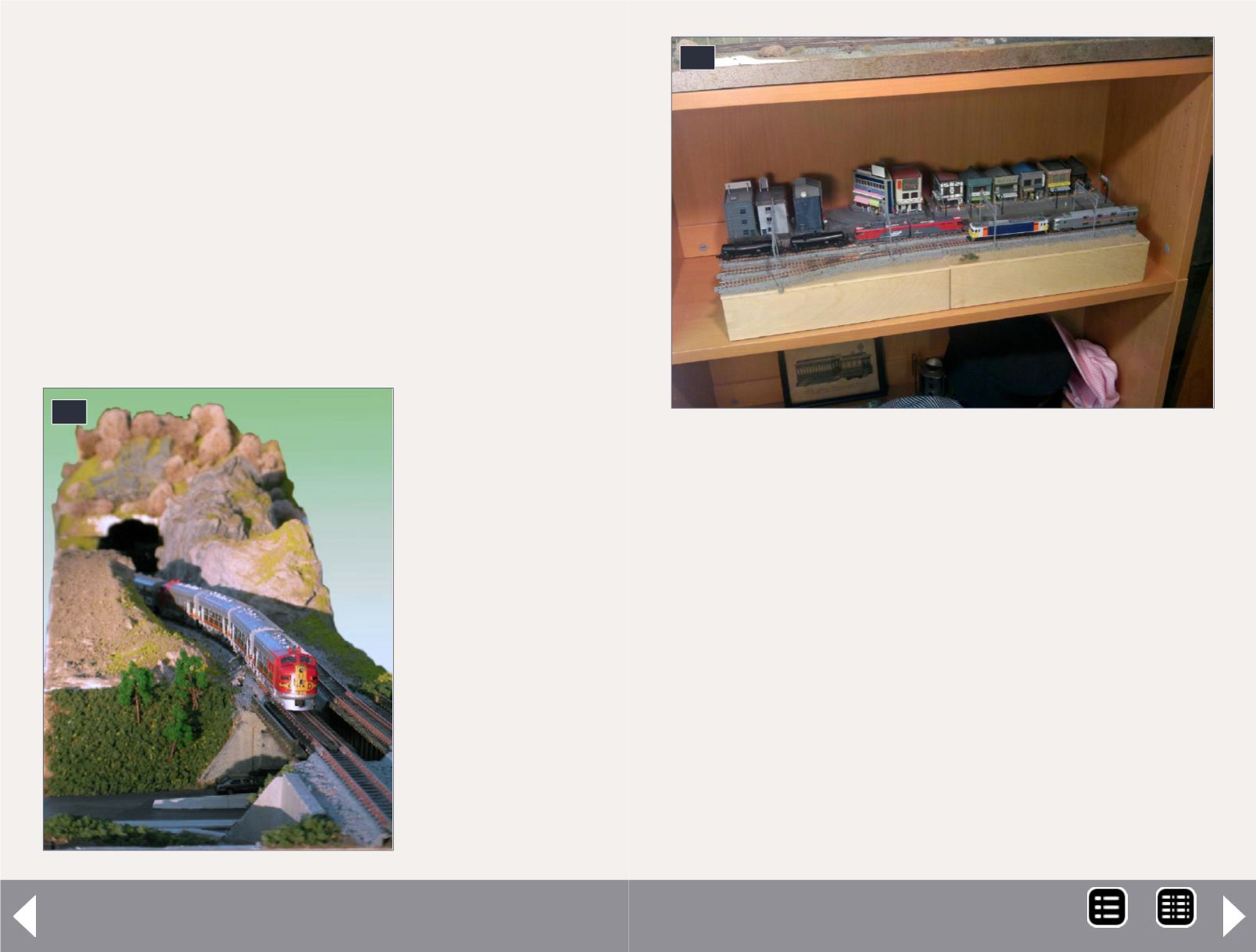
Dirt, of course, is dirt cheap. Use a dollar-store sieve (not the
one in the kitchen!) to separate the “other stuff,” leaving you
with the fines, which you can then sprinkle over wet earth-
colored paint. Articles abound, so a bit of searching should
give you more than you ever wanted to know about using
the real thing for model dirt.
What you put on top of that will depend on what you’re
modeling, so I won’t go into much more detail. If you’re
thinking about arid desert, you’re just about set – the odd
tumbleweed and Joshua tree or saguaro cactus. Forests,
on the other hand, mean trees, which are expensive when
bought, so you will have to start out just “suggesting” the
12. Even though
individual
modules are
small, when
you snap them
together, you
can get quite
interesting
scenes.
12
$500 layout 3rd place - 10
forests, using the many tricks of the hobby. We’ll assume
you’ll deal with lush, dense woodlands later.
Buildings, too, can vary depending on what you’re modeling.
You could easily blow the entire budget on a single crafts-
man kit. On the other end of the spectrum, there are cheap
shake-the-box kits that come in at around $10, and a small
number of these will help fill things out initially. If scratch-
building has ever held any appeal to you, you’ll be surprised
at how much you can accomplish with a sheet of balsa, an
X‑Acto knife, and some Duco cement can get you. These can
13. Small modules can still make big scenes. No need
to hide away your works in progress. Show them off
to visitors, using as much or as little space as you
have. Here, two modules abut to form a scene on a
bookshelf, even while I decide how to finish them.
13
MRH-Oct 2014


